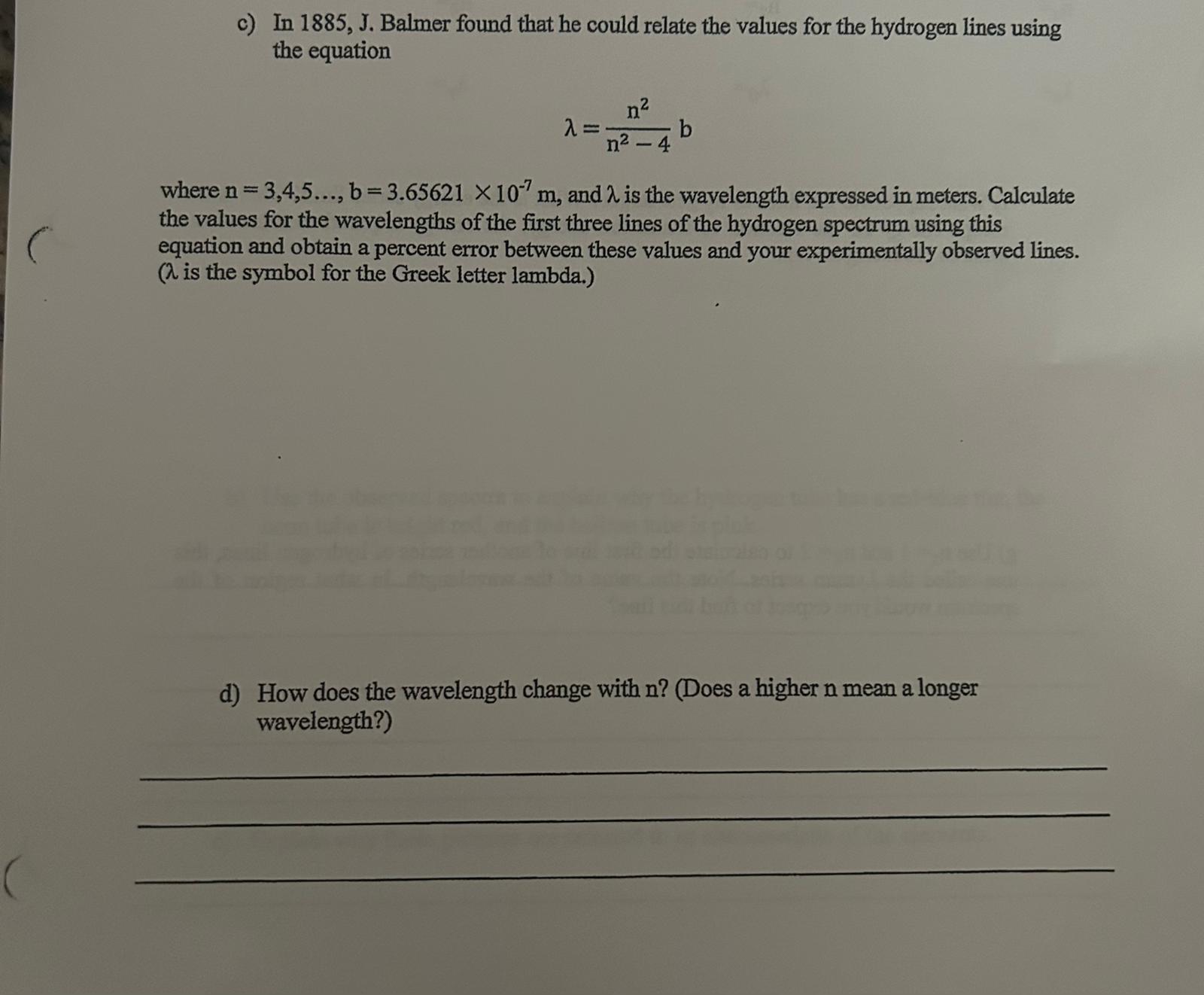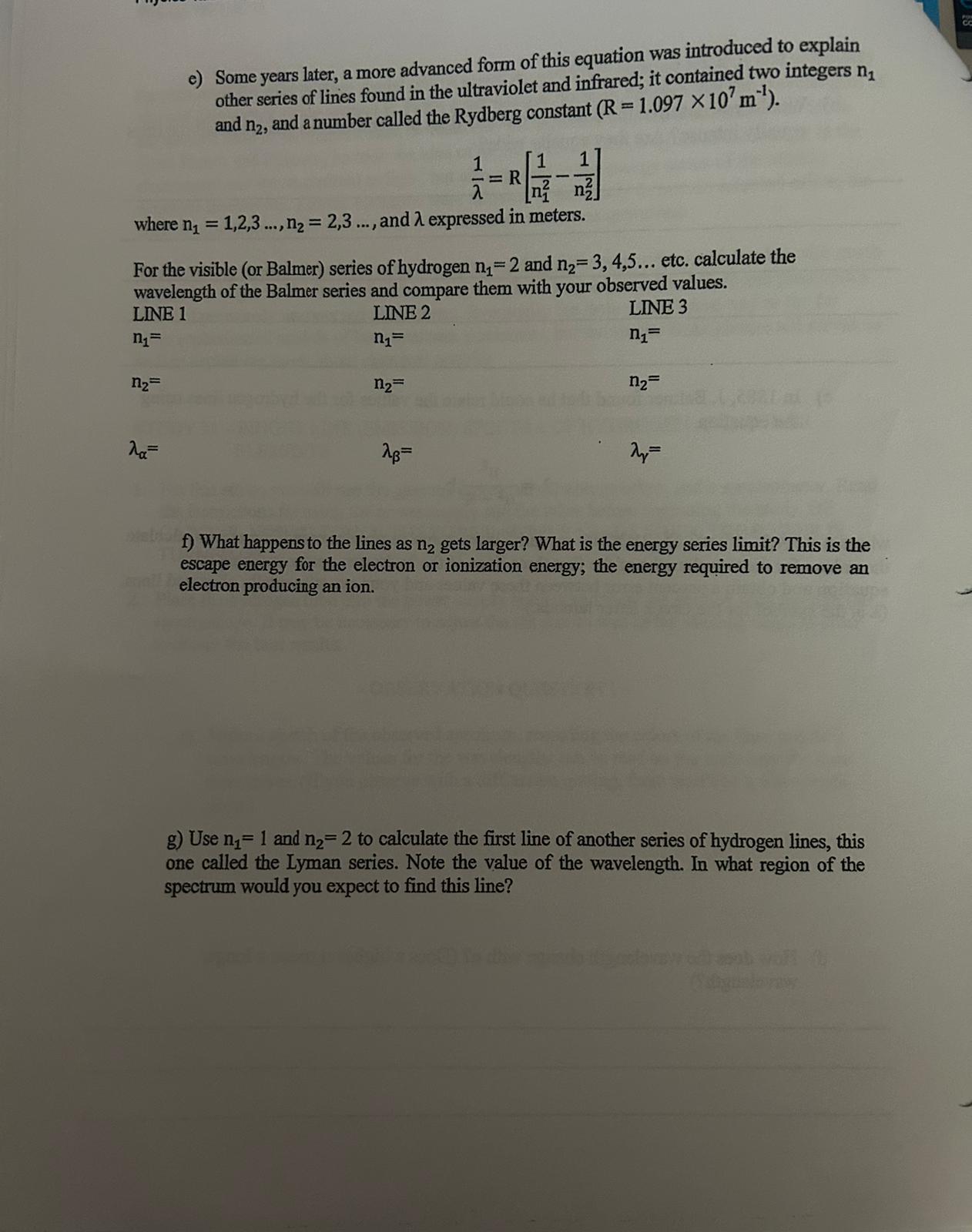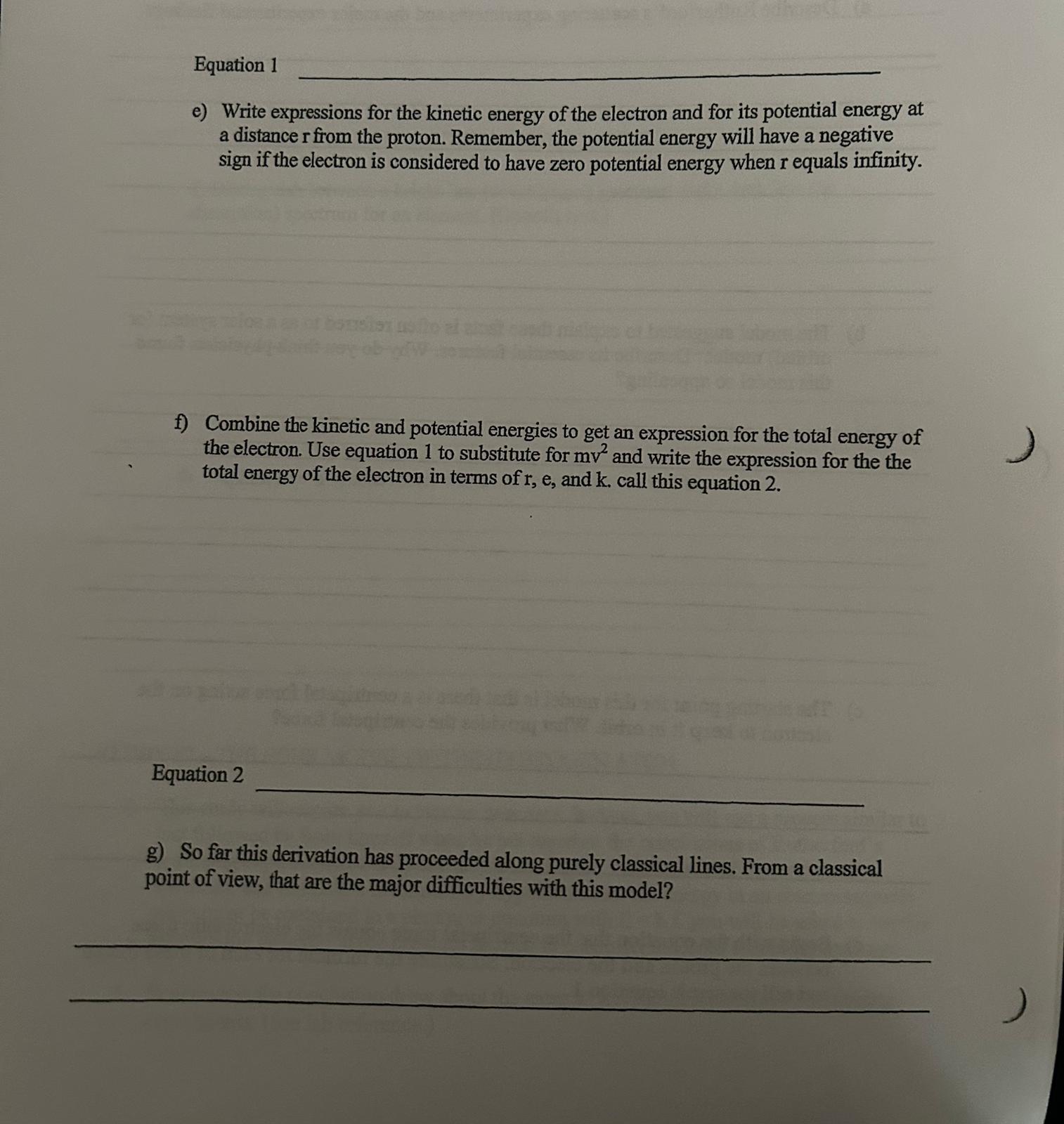Home /
Expert Answers /
Physics /
c-in-1885-j-balmer-found-that-he-could-relate-the-values-for-the-hydrogen-lines-using-the-equati-pa568
(Solved): c) In 1885,J. Balmer found that he could relate the values for the hydrogen lines using the equati ...




c) In . Balmer found that he could relate the values for the hydrogen lines using the equation where , and is the wavelength expressed in meters. Calculate the values for the wavelengths of the first three lines of the hydrogen spectrum using this equation and obtain a percent error between these values and your experimentally observed lines. ( is the symbol for the Greek letter lambda.) d) How does the wavelength change with ? (Does a higher mean a longer wavelength?)
e) Some years later, a more advanced form of this equation was introduced to explain other series of lines found in the ultraviolet and infrared; it contained two integers and , and a number called the Rydberg constant . where , and expressed in meters. For the visible (or Balmer) series of hydrogen and etc. calculate the wavelength of the Balmer series and compare them with your observed values. LINE 1 LINE 2 LINE 3 f) What happens to the lines as gets larger? What is the energy series limit? This is the escape energy for the electron or ionization energy; the energy required to remove an electron producing an ion. g) Use and to calculate the first line of another series of hydrogen lines, this one called the Lyman series. Note the value of the wavelength. In what region of the spectrum would you expect to find this line?
d) Begin with the equation that the centripetal force equals the electrostatic force between the proton and the electron. Substitute the formula for each of these forces and call the result equation 1.
e) Write expressions for the kinetic energy of the electron and for its potential energy at a distance from the proton. Remember, the potential energy will have a negative sign if the electron is considered to have zero potential energy when equals infinity. f) Combine the kinetic and potential energies to get an expression for the total energy of the electron. Use equation 1 to substitute for and write the expression for the the total energy of the electron in terms of , and . call this equation 2. Equation 2 g) So far this derivation has proceeded along purely classical lines. From a classical point of view, that are the major difficulties with this model?
Expert Answer
1] (c) Given the relation where, n=3, 4, 5, ......Therefore, the values for the wavelengths of the first three lines of the hydrogen spectrum is(i) n=3 (ii) n=4 (iii) n=5 (d) As we can see from the above results obtained, as n increases the wavelength decreases. A higher n means a shorter wavelength.